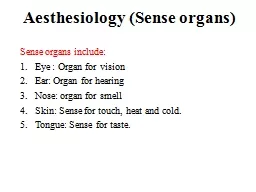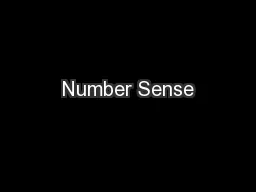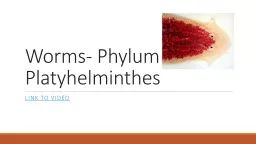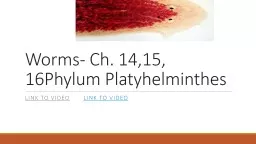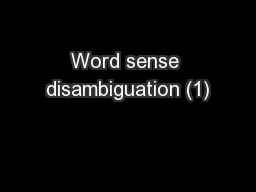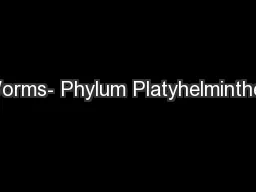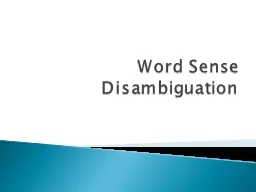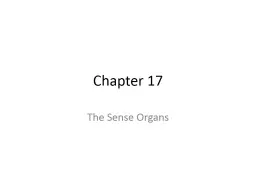PPT-Aesthesiology (Sense organs)
Author : celsa-spraggs | Published Date : 2019-01-21
Sense organs include Eye Organ for vision Ear Organ for hearing Nose organ for smell Skin Sense for touch heat and cold Tongue Sense for taste EYE Eye in general
Presentation Embed Code
Download Presentation
Download Presentation The PPT/PDF document "Aesthesiology (Sense organs)" is the property of its rightful owner. Permission is granted to download and print the materials on this website for personal, non-commercial use only, and to display it on your personal computer provided you do not modify the materials and that you retain all copyright notices contained in the materials. By downloading content from our website, you accept the terms of this agreement.
Aesthesiology (Sense organs): Transcript
Download Rules Of Document
"Aesthesiology (Sense organs)"The content belongs to its owner. You may download and print it for personal use, without modification, and keep all copyright notices. By downloading, you agree to these terms.
Related Documents

